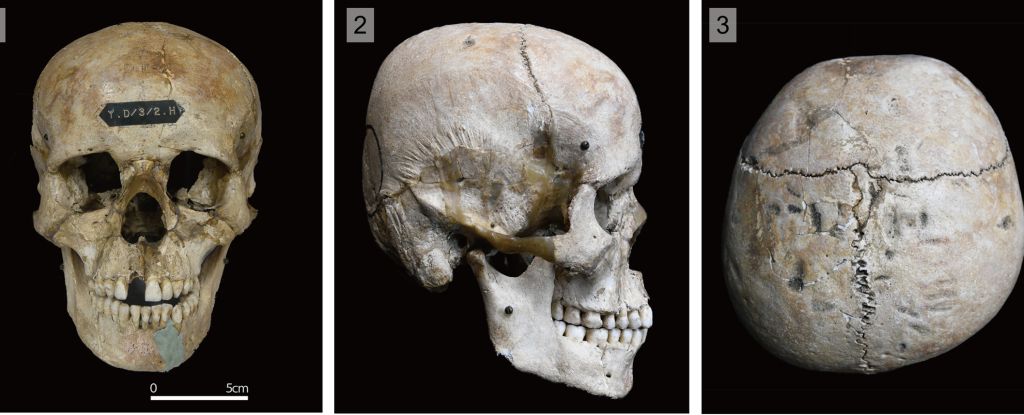Anthropology
Related: About this forumUnveiling Japan's ancient practice of cranial modification: The case of the Hirota people in Tanegas
AUGUST 16, 2023
by Kyushu University
A team of biological anthropologists and archaeologists from Kyushu University and the University of Montana have broken new ground in our understanding on the practice of intentional cranial modification, a practice found in numerous ancient civilizations around the world.
Publishing in PLOS ONE, the team reports that the Hirota people, who lived on the southern Japanese island of Tanegashima around the 3rd century to 7th century CE, also partook in the practice. Moreover, the study found no significant differences in cranial modification between sexes, indicating that both males and females practiced intentional cranial modification.
Cranial modification is a form of body alteration where the head of a person is pressed or bound, usually at an early age, to permanently deform the skull. The practice predates written history, and researcherMs theorize that it was performed to signify group affiliation or demonstrate social status.
"One location in Japan that has long been associated with cranial deformation is the Hirota site on the Japanese island of Tanegashima, in Kagoshima Prefecture. This is a large-scale burial site of the Hirota people who lived there during the end of the Yayoi Period, around the 3rd century CE, to the Kofun Period, between the 5th and 7th century CE," explains Noriko Seguchi of Kyushu University's Faculty of Social and Cultural Studies who led the study.
More:
https://phys.org/news/2023-08-unveiling-japan-ancient-cranial-modification.htmlgo
~ ~ ~
The Flattened Skulls of The Ancient Hirota People Were No Accident
HUMANS
17 August 2023
ByMICHELLE STARR

The deformed skull of an individual found at the Hirota site. (The Kyushu University Museum/Noriko Seguchi/Seguchi et al., PLOS ONE, 2023)
Humans have been intentionally changing their bodies for many thousands of years, but there's no denying that one of the most fascinating practices is that of skull modification.
Around the world, throughout history, many cultures have artificially and intentionally altered the shapes of their skulls.
Although the practice appears elsewhere in Asia, evidence of individuals deforming their skulls on purpose in Japan is scarce. There's just one place where it may have taken place: the island of Tanegashima, from around the 3rd to 7th centuries CE.
In contrast to other examples, however, the potential modifications are subtle. So subtle, other less intentional factors couldn't be ruled out.
Now, an in-depth analysis has confirmed it. The people who lived on what is now known as the Hirota site set out to alter the shapes of their skulls, both men and women alike.
More:
https://www.sciencealert.com/the-flattened-skulls-of-the-ancient-hirota-people-were-no-accident
rampartc
(5,410 posts)are they sure this is "intentional?" i guess indigenous people still tie their infants to "cradle boards;" i wonder if these kids grow up with the "alien" skulls?
wnylib
(21,487 posts)a cause of changing the head shape. The Mayans and some other people of Central and South America, as well as a group on the Pacific Northwest, placed a board over the child's forehead, causing it to grow into a slanted form. The forehead board remained on the baby's head all the time in order to achieve the slant, but a baby on a cradle board remained there only while the mother was traveling or busy in a field or other work.